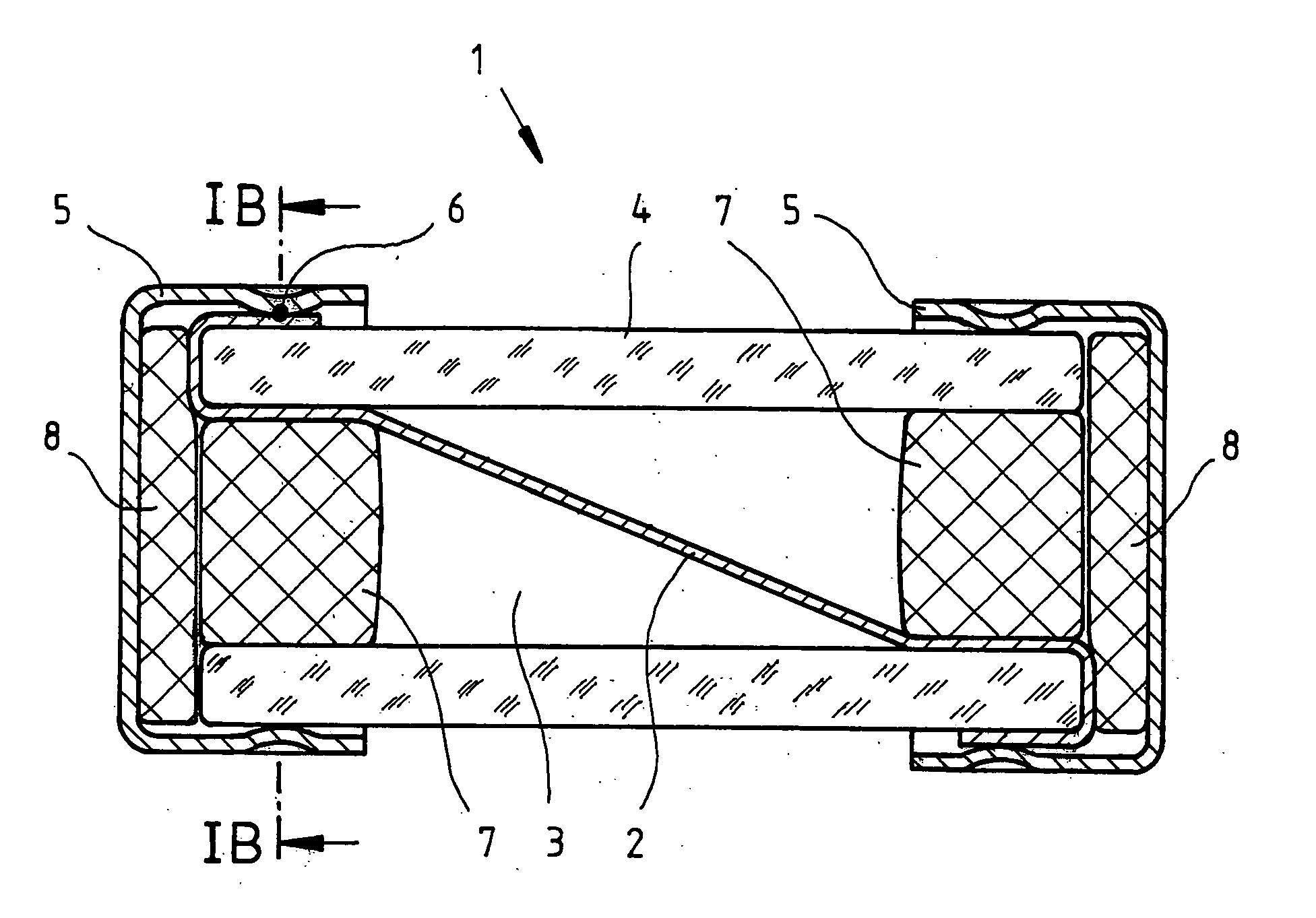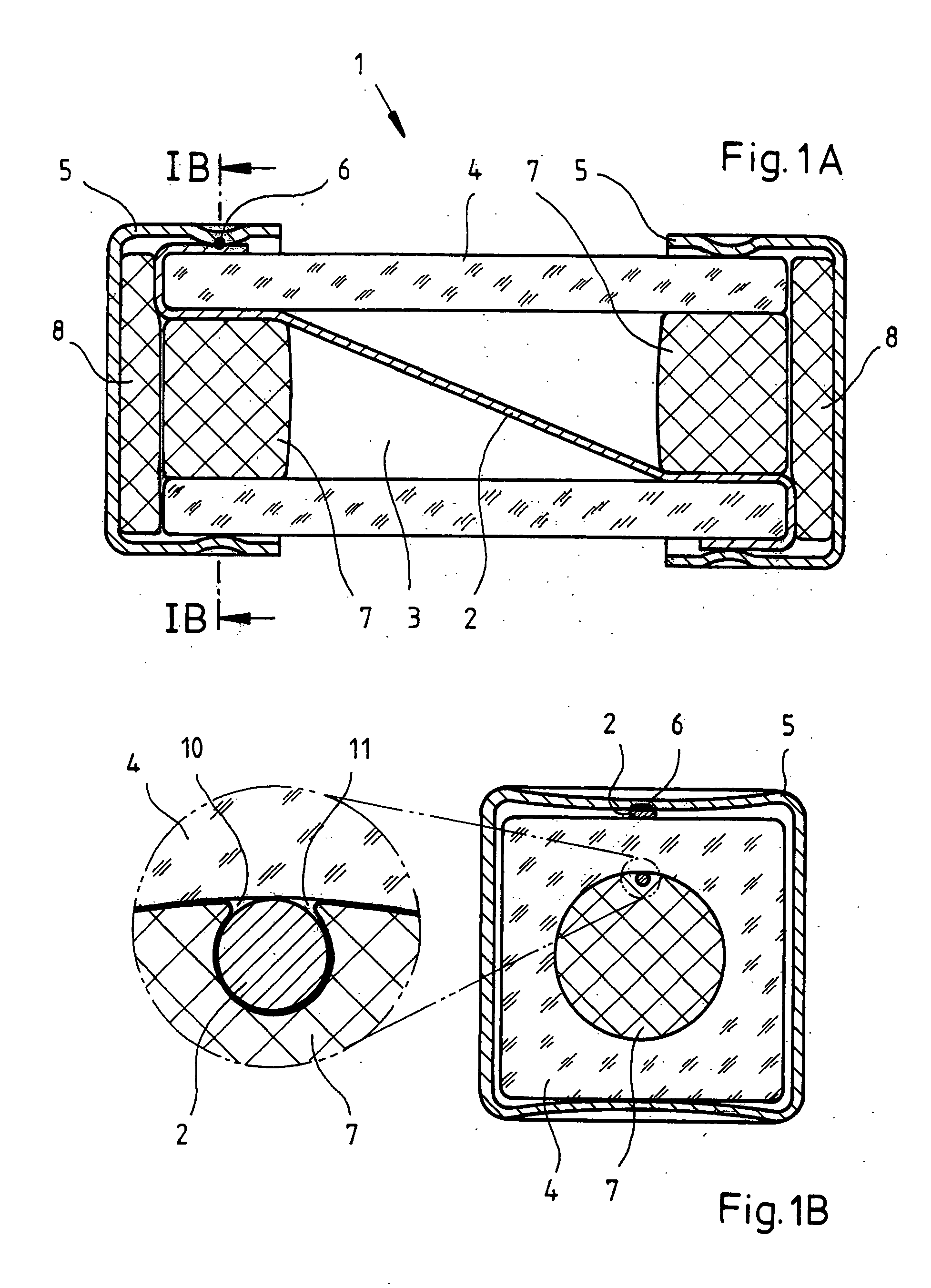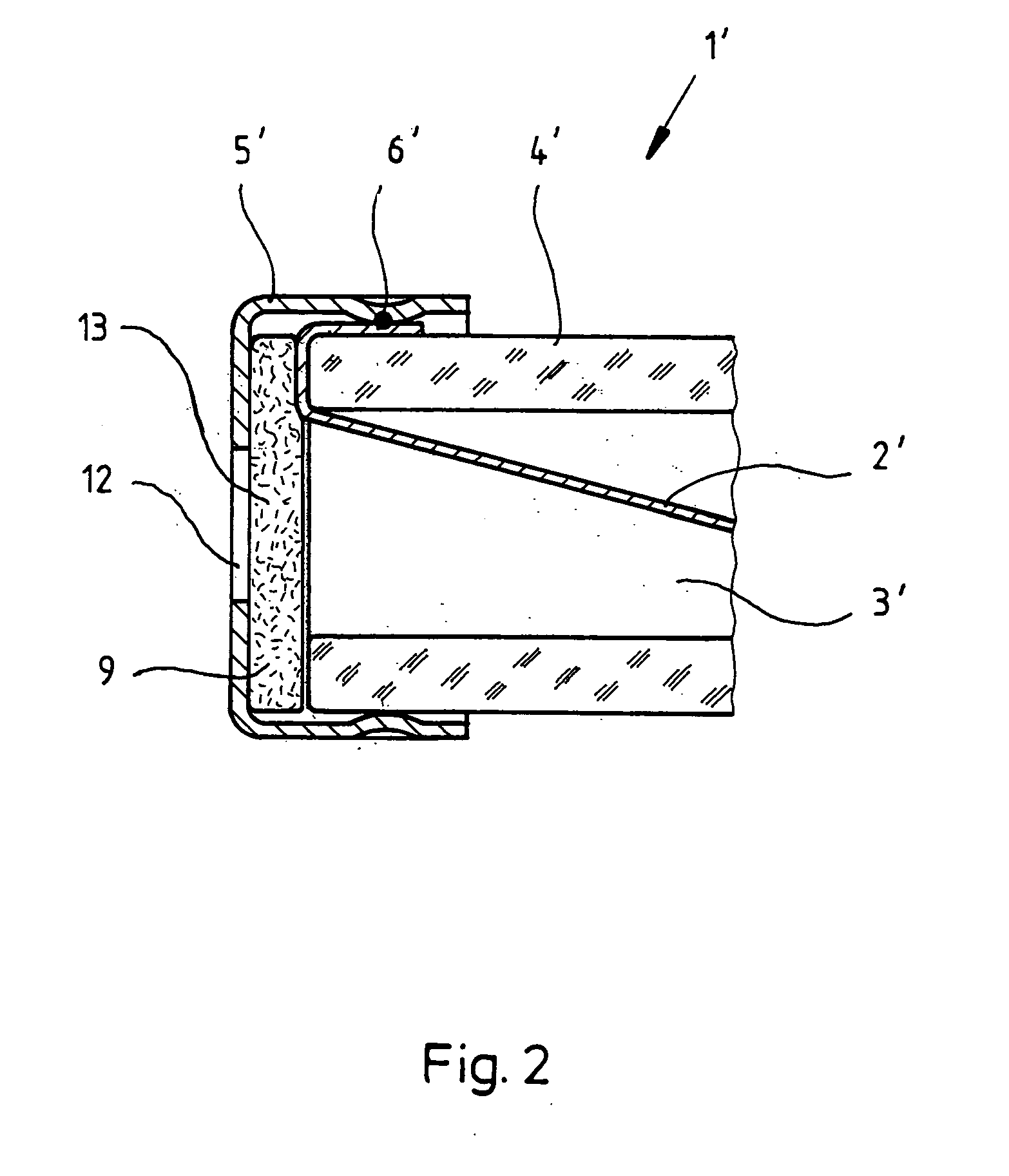Fuse element with a temporary quasi-hermetic seal of its interior
a fuse element and quasi-hermetic seal technology, which is applied in the direction of basic electric elements, electric devices, emergency protective devices, etc., can solve the problems of affecting the operation of the fuse element, and causing the element to be damaged
- Summary
- Abstract
- Description
- Claims
- Application Information
AI Technical Summary
Benefits of technology
Problems solved by technology
Method used
Image
Examples
Embodiment Construction
[0016] The preferred embodiment of the fuse element in accordance with the invention is illustrated in FIGS. 1A and 1B. The fuse element 1 has a fusible conductor 2, which is arranged in the internal cavity 3 of a cylindrical tube 4 such that it transverses the cavity 3 approximately diagonally. The diagonal arrangement of the fusible conductor 2 in the cavity 3 creates defined environmental conditions at the surface of the fusible conductor since it does not contact the internal walls of the tube 4. The fusible conductor 2 is, for instance, a wire with a circular cross-section. In alternative embodiments, the fusible conductor can also have a wire wound spirally around an electrically insulating core. The fusible conductor 2 can also consist of a plurality of wire sections conducted together. At the ends of the tube 4, the fusible conductor is passed around the end faces such that the ends of the fusible conductor 2 rest against the outer wall of the tube 4.
[0017] Applied to the en...
PUM
 Login to View More
Login to View More Abstract
Description
Claims
Application Information
 Login to View More
Login to View More - Generate Ideas
- Intellectual Property
- Life Sciences
- Materials
- Tech Scout
- Unparalleled Data Quality
- Higher Quality Content
- 60% Fewer Hallucinations
Browse by: Latest US Patents, China's latest patents, Technical Efficacy Thesaurus, Application Domain, Technology Topic, Popular Technical Reports.
© 2025 PatSnap. All rights reserved.Legal|Privacy policy|Modern Slavery Act Transparency Statement|Sitemap|About US| Contact US: help@patsnap.com



